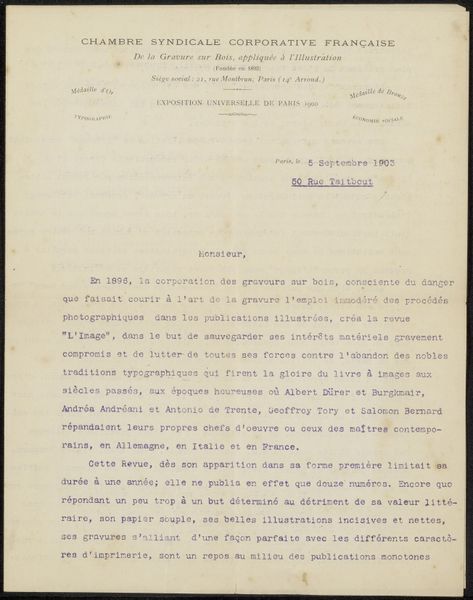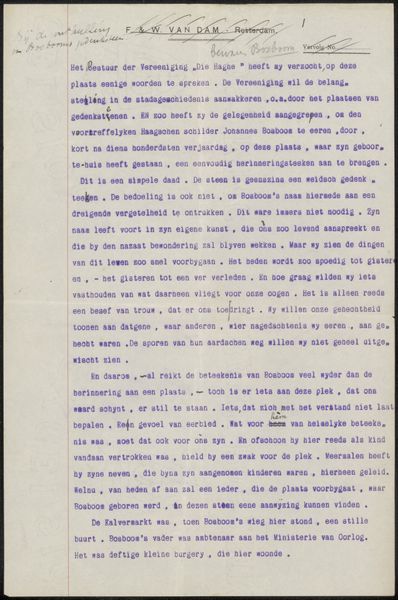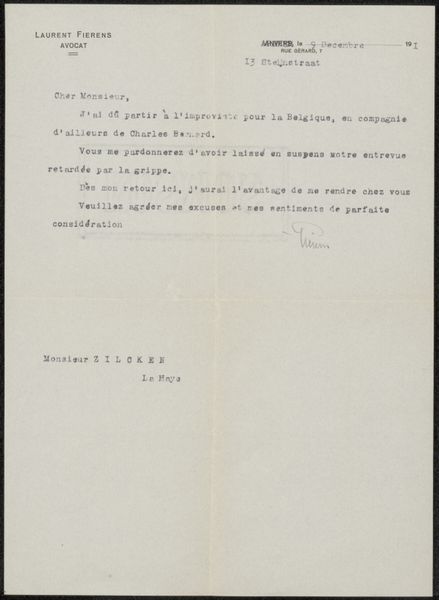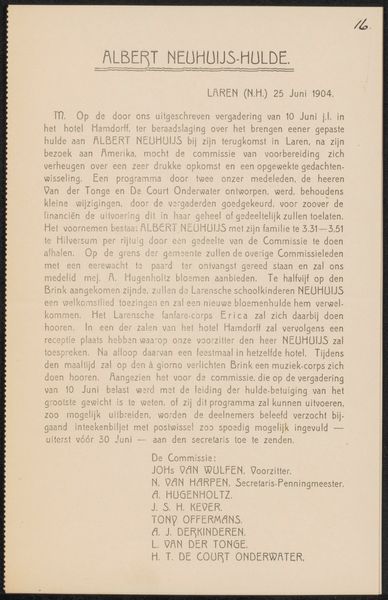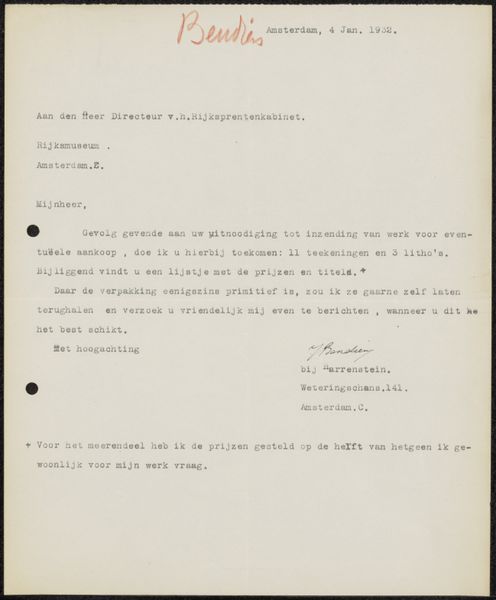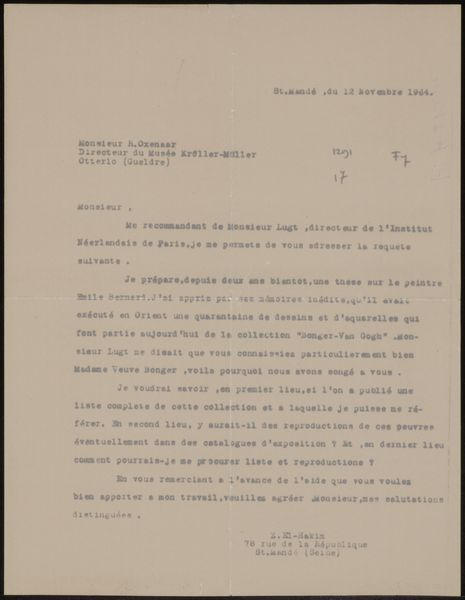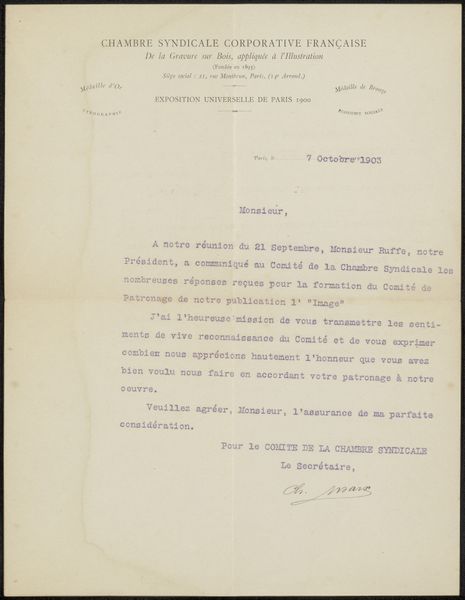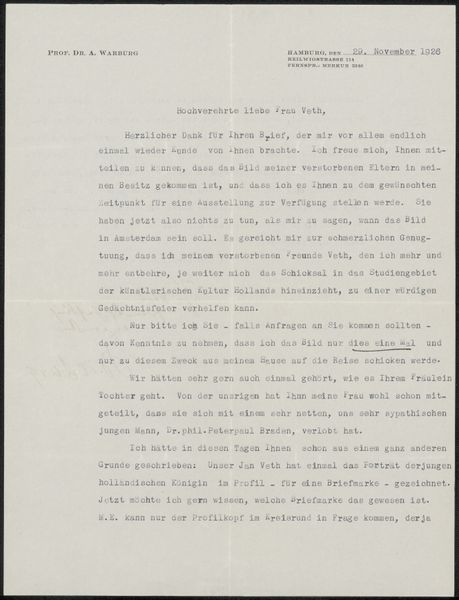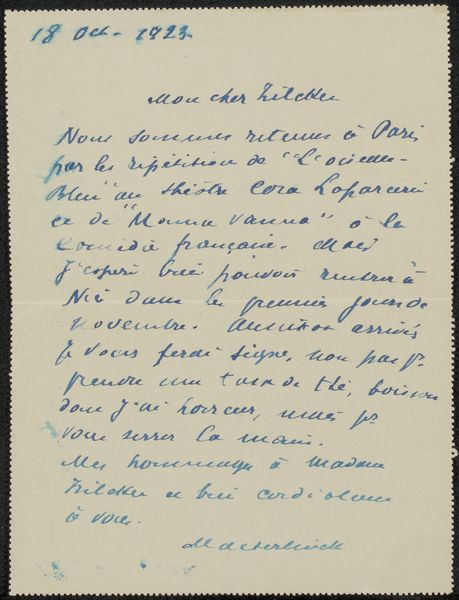
drawing, print, textile, paper, typography, ink
#
drawing
# print
#
textile
#
paper
#
typography
#
ink
#
calligraphy
Copyright: Rijks Museum: Open Domain
Curator: This document, titled "Tekst uit archief Philip Zilcken," whose date is approximated to be somewhere between 1930 and 1937, presents us with a page of printed text. What strikes you about it initially? Editor: The text immediately evokes a sense of scholarly reflection; a thoughtful preface perhaps? There's a clear visual hierarchy established by the typography. The neat, dense blocks of text seem like an attempt to organize thoughts, maybe a summary of ideas presented by Zilcken's work. Curator: Precisely. Examining the interplay of social networks, consider that the text appears to be a preface written by Camille Mauclair for Philip Zilcken, perhaps introducing Zilcken’s artwork or an exhibition catalogue. It is ink on paper, typography, we would categorize as printmaking, or even textile depending on how it was presented, and shows features of calligraphy. How might these material aspects play into its overall reception? Editor: The materials and typography speak volumes. This wasn't mass-produced ephemera. There’s a clear consideration to present this piece to an exclusive or academically discerning audience. Curator: Agreed. And beyond aesthetics, the historical and social context is pivotal. This would have circulated amongst the artistic and literary circles in Paris during that period. Mauclair, having accepted to present Zilcken to the public, mentions how their paths converged despite the distance of space and time; so this textual component allows for some analysis of relationships and social positions in the contemporary art field. Editor: Definitely, It subtly emphasizes the connections inherent in cultural movements, perhaps illustrating the intertwining relationships between various artists during a time when artistic credibility was more of an institutional project, but the fact that the piece still reads as "Preface", hints at an attempt for some level of wider publication and public view. Curator: An interesting thought. It leaves me pondering how their positions of authority might have shaped interpretations and influence the art that was shown. What are your thoughts on that? Editor: Well, considering how integral artistic approval has become and remained since the dawn of "institutionalized" and critically-monitored artistic fields, this type of writing offers important insights in contextualizing past artists and social structures through contemporary social concepts like intersectionality and the politics of seeing. Curator: Exactly. The dynamics between art, artist, critic, and society. This analysis will benefit all current and future projects relating to the public function of art. Editor: An ideal end note to this analysis!
Comments
No comments
Be the first to comment and join the conversation on the ultimate creative platform.
